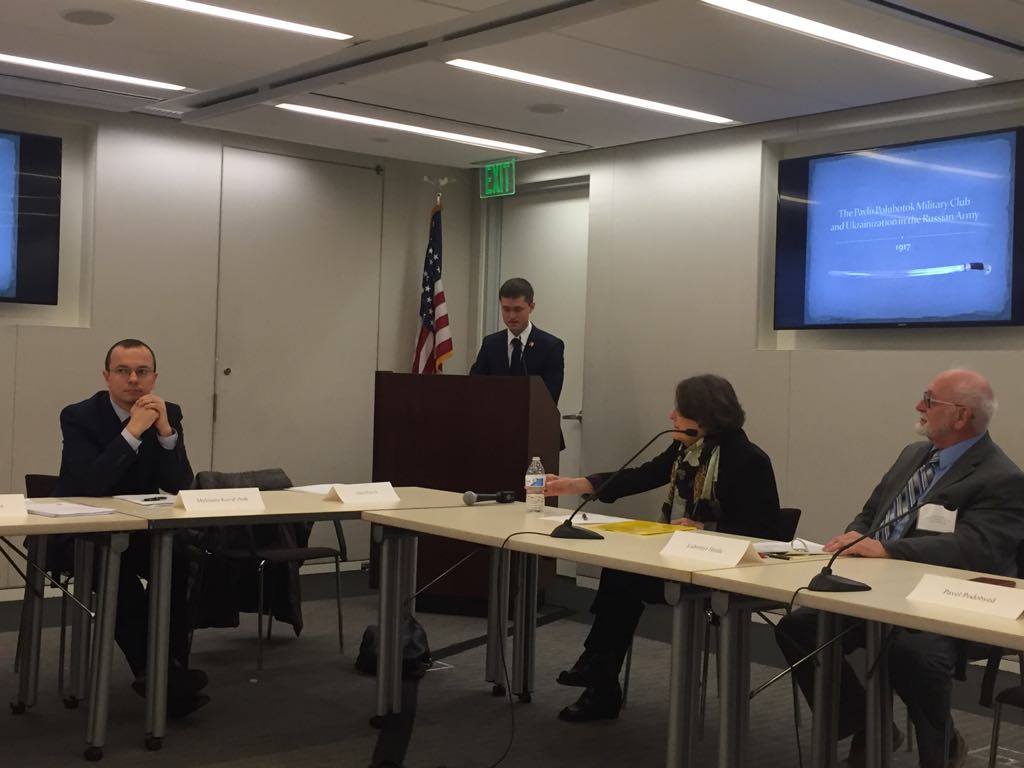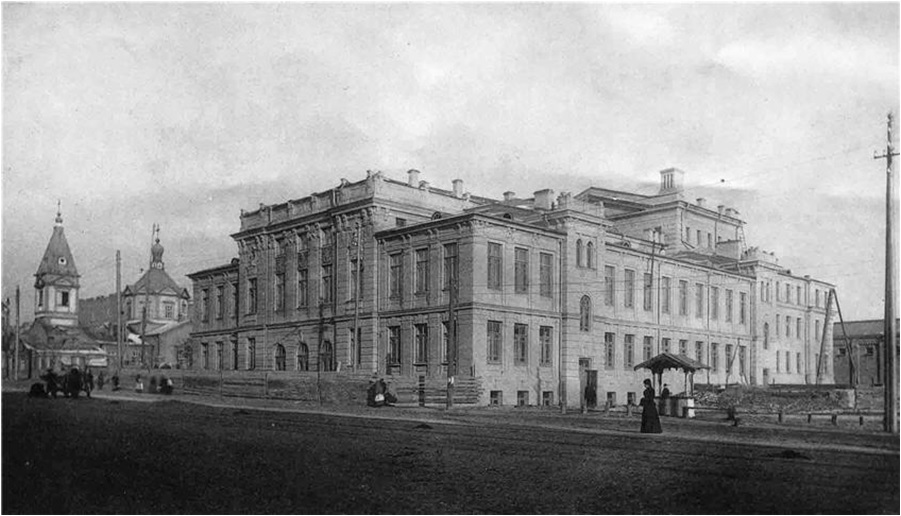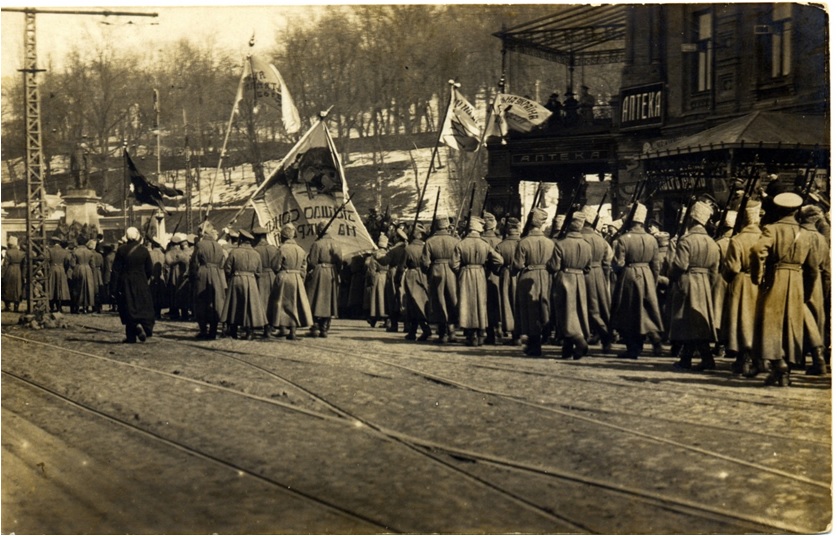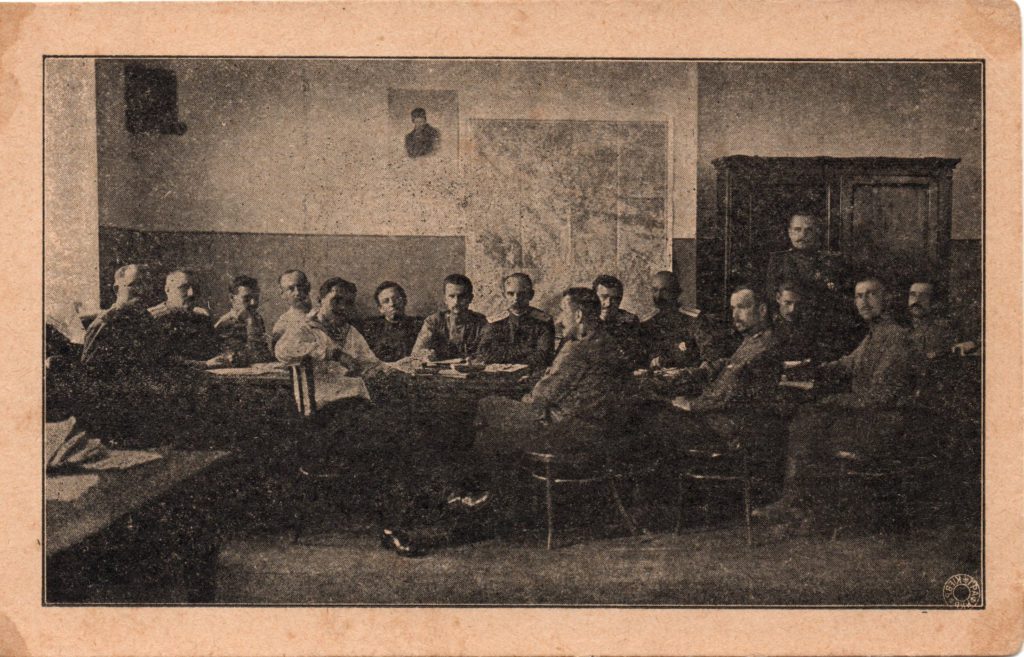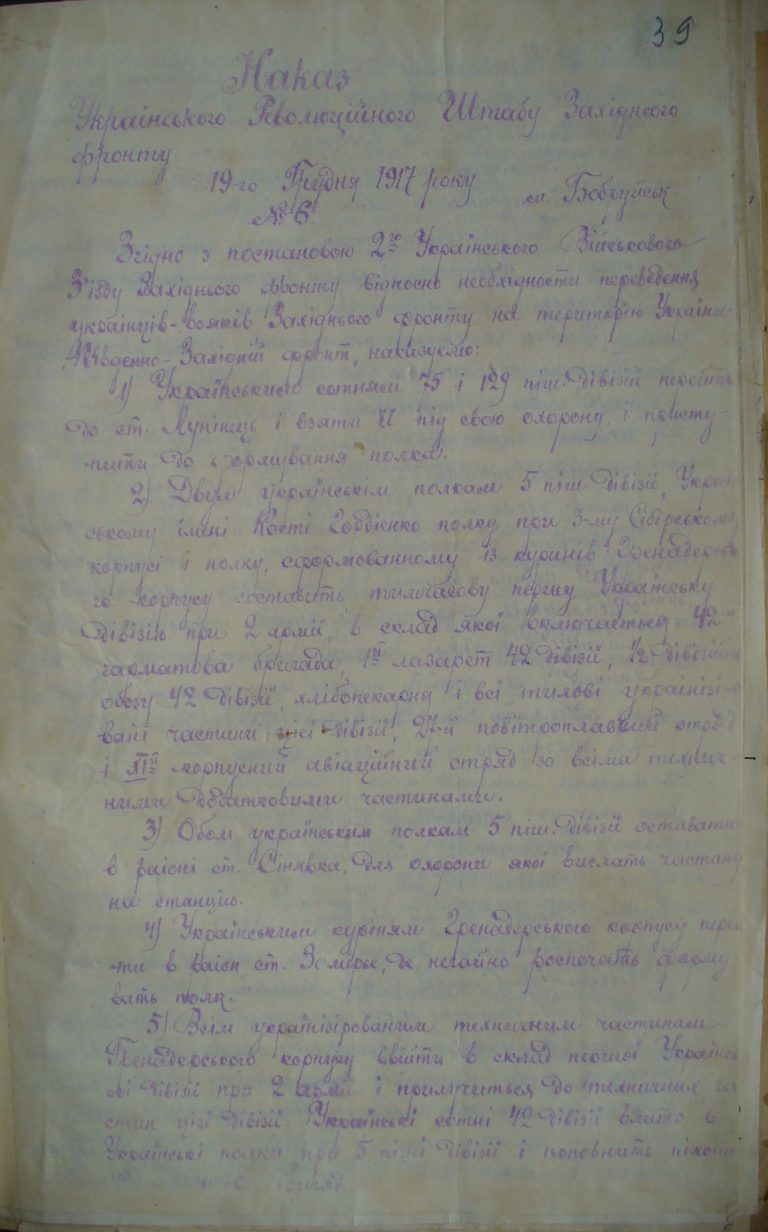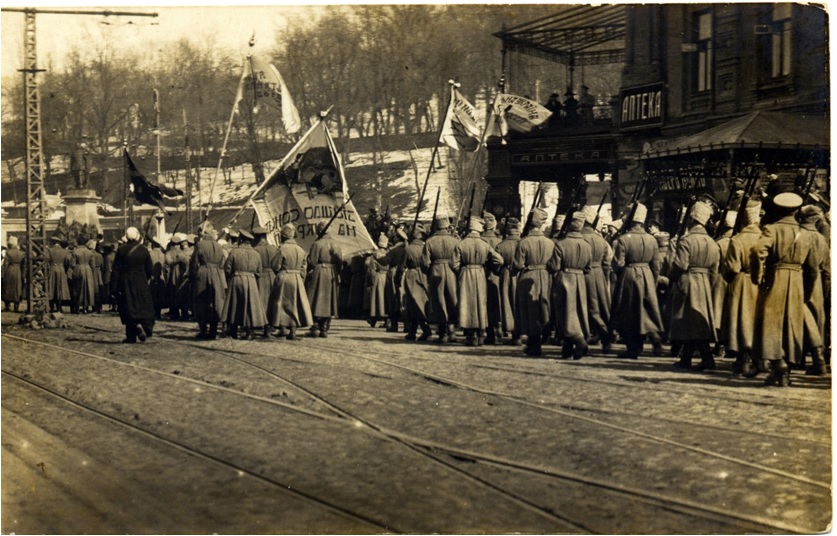
The spring of 1917 brought Ukrainians not only social and political changes, but also a hope for revival of their own armed forces. The Pavlo Polubotok Military Club, as well as Ukrainization in the Russian army in 1917, is an important stage of formation of the Ukrainian army. Yet, these processes are based on different concepts proposed by different ideologists.
The Pavlo Polubotok Military Club aspired to immediate formation of the Ukrainian national army, which was supposed to become an instrument allowing Ukraine to gain its freedom. The club was created by representatives of the Ukrainian military-political elite: lawyer Mykola Mikhnovsky, doctor Ihor Lutsenko, colonels Glinsky and Svaryka. Those people were not “random personalities in Ukrainian history.” Each of them played an important role in the process of formation of the Ukrainian armed forces or substantiation of the right of Ukrainians to their own independent state.
In March 1917, these people advanced the slogan about the national armed forces revival. The ideologists of the club considered it impossible to build a Ukrainian state without creating a national army. They actively promoted their ideas among Ukrainian soldiers of the Kyiv garrison. As a result, officers of the Russian Army united in the Pavlo Polubotok Military Club. The club itself was located in the premises of the Troitsky People’s House (nowadays the Kyiv National Academic Operetta Theater is located in this building).
In March 1917, in the Russian Army, there were no genuinely Ukrainian military units yet. Therefore, the soldiers of the Kyiv garrison, under the influence of the ideas of the club, decided to demand from the Russian authorities formation of the 1st Ukrainian regiment named after Bohdan Khmelnytsky. However, this idea was not accepted by either Kyiv or Petrograd. The Central Rada did not support these aspirations, because it did not want to have a conflict with the Russian authorities. Moreover, in March 1917, the Central Rada was not yet a serious political force. Popular Ukrainian parties, ideologically socialist, condemned any manifestations of force in the Ukrainian movement. “There was no Ukrainian militarism before, and it should not exist in the future”, said Volodymyr Vynnychenko.
Nevertheless, in April 1917, about 3 thousand soldiers and recruits announced to the Stavka of the commander-in-chief that they would serve only in a Ukrainian unit. These soldiers decided that they would go to the frontline only as part of the Ukrainian unit and under the Ukrainian flag. The threats and pressure from the Russian command did not change the intentions of Ukrainians. The situation was becoming more and more tense.
While in the territory of Ukraine a whole corps was formed from a Polish division in the Russian army, Ukrainians were denied this right.
In the end of April, formation of the first Ukrainian regiment finally started – the Central Rada supported the initiative that gained extraordinary popularity among Ukrainian soldiers.
On May 1, at the initiative of the Pavlo Polubotok Military Club, a military holiday was held in the field of Syrets in Kyiv. On the proposal of M. Mikhnovsky, the soldiers approved creation of the 1st Ukrainian Hetman Bohdan Khmelnytsky regiment without preliminary permission and formed several divisions. 3 574 people registered to this regiment.
The Russian command perceived the message about creation of the regiment as news about “Ukrainian uprising”. At first, the headquarters staff of the Southwest Front expected to end the “uprising” by using force, but later Russians changed their minds, as too many soldiers of the Kyiv garrison sympathized soldiers from the Bohdan Khmelnytsky regiment. Subsequently, Russians had to make further concessions to Ukrainians: the Russian Minister of War Alexander Guchkov agreed to formation of the 1st Ukrainian Regiment. However, pretty soon the Russian command demanded to send the Ukrainian regiment to the front, so that the Ukrainian military division would not influence big politics in peaceful Kyiv. On May 25, the new Russian Minister of War Alexander Kerensky approved the composition of the regiment with one condition: no other Ukrainian units could be created in the Russian army till the end of the war.
However, very soon in Chernihiv, Ukrainian recruits began to unite without permission in a separate unit. This happened under the influence of the members of Brotherhood for Self-determination from the Pavlo Polubotok Military Club. The Ukrainian General Military Committee, which at that time held talks with the military command and the Provisional Government on the Ukrainization of three corps of the Russian Army of the Southwest Front, decided to send recruits to the front.
The ideologists of the Pavlo Polubotok Military Club understood very well that the Ukrainianization of some units of the Russian army did not mean their transformation into the Ukrainian army. On the one hand, Ukrainization partially met the expectations of Ukrainians who served in the Russian army; on the other hand, the Ukrainianized units differed from ordinary units in discipline. Thus, Ukrainization in the Russian Army was a process completely controlled by the Russian command.
In fact, contrary to the moderate attitude of the Central Rada, which did not want to have conflicts with the Provisional Government, the supporters of the Pavlo Polubotok Military Club called on soldiers not to wait for official decisions, but to organize themselves in a separate regiment, ignore the bodies of the Provisional Government and pursue the way of proclamation of independent Ukraine.
Having arrived in Kyiv, Chernihiv soldiers started to demand to proclaim them the 2nd Ukrainian regiment named after Hetman Pavlo Polubotok (polubotkivtsi). They refused to obey the order to go to the front and stayed in Kyiv.
The conflict between the Central Rada and the soldiers gained momentum more and more. The proclamation of the Second Universal of the Central Rada was the reason for the attack. Polubotkivtsi perceived it as betrayal of Ukrainian interests. On July 18-19, 1917, they tried to capture key positions in Kyiv.
The rebels did not have a clear action plan. Having established control over important positions in Kyiv, they offered the Central Rada to make use of the conquered positions. However, the Central Rada did not dare to take power in Ukraine. The Central Rada decisively dissociated itself from polubotkivtsi. With the help of the 1st Ukrainian B. Khmelnitsky regiment and the troops of the headquarters of the Kyiv military district, polubotkivtsi were pushed out of the city, and the main rebels were arrested.
It was the ending of one of the brightest pages of the Ukrainian army’s modern history. Although the Pavlo Polubotok Military Club failed in summer of 1917, its ideas were crucial for Ukraine.
In the end, the leadership of the UPR realized that it was impossible for Ukraine to become independent without its own combat-capable army. Let’s remember this lesson today!
Галерея
© 2021 All Rights Reserved Heroika
Developed by ZERUM

